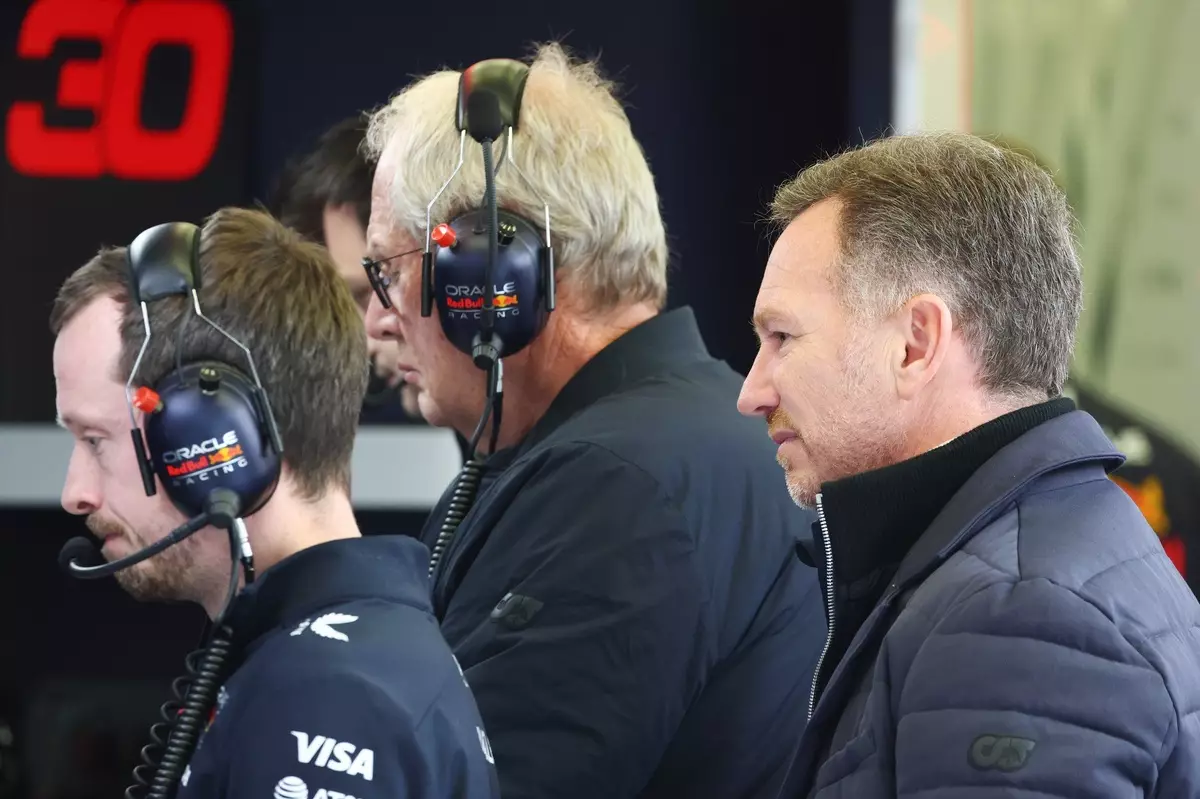Christian Horner’s reflections on Red Bull’s ongoing struggles in Formula 1 offer a window into the intricate dynamics of the sport, particularly as the team grapples with unusual technical issues. After dominating the grid for several seasons, Red Bull’s potent combination of engineering excellence and driver skill has begun to show cracks. The once unassailable reliability and performance of the RB21 is now under scrutiny, with Horner lamenting a disconnect between their wind tunnel data and performance on the track. As the 2025 season unfolds, hurdles faced by Red Bull in correlation between simulation and actual racing could reshape their future in a sport that continuously demands perfection.
This predicament stands in stark contrast to the team’s illustrious recent past. Despite Max Verstappen’s victory at the Japanese Grand Prix—a beacon of hope in an otherwise turbulent season—the ghosts of a waning dominance haunt Red Bull. The Bahrain Grand Prix served as a sobering reminder of their descent from grace, prompting urgent internal reviews. When the top brass convenes for what Horner describes as “crisis talks,” it signals not just a moment of reflection but poses an existential question for a team that was once the gold standard of performance and innovation.
Understanding the Disconnect: A Technical Conundrum
Horner’s metaphor of “looking at two different watches” poignantly captures Red Bull’s current plight. The inconsistency between wind tunnel readings and real-world data is not merely a technical issue; it’s emblematic of a deeper malaise within the engineering setup that could define their trajectory during this transitional period. As the team battles to bridge that gap, the idea of relying on a set of tools that no longer delivers accurate, actionable insights raises eyebrows, especially for a racing team accustomed to pioneering advancements.
The current regulations, set to expire at the end of 2025, leave little room for radical redesigns. While some teams like Haas and Mercedes have seemingly leveraged this period for incremental gains, Red Bull finds itself trapped in a cycle of identifying issues rather than formulating swift solutions. The insight that the wind tunnel is sending them in an unproductive direction points to a troubling reality: As the competitive landscape evolves and other teams capitalize on their failures, Red Bull’s storied reputation hangs in the balance.
Horner’s candid acknowledgment that issues stemming from last season have permeated into their current performance landscape is significant. The themes of grasping for aerodynamic efficiency and instilling confidence in drivers like Verstappen are recurring motifs in the Red Bull narrative. Every corner taken at half-speed because of uncertainty becomes another lost opportunity on the racetrack, and the articulation of an “entry phase into the mid-corner” concern resonates within the broader context of engineering excellence.
The Road Ahead: Hopes for Recovery
In the face of adversity, Horner remains resolute about the team’s capability to weather this storm. The experience and prowess of their technical team, which has delivered stunning innovations in the past, present a glimmer of optimism amid daunting challenges. Accumulating data from races in Australia, China, Japan, and Bahrain could, hopefully, shed light on pathways to improvement. The process of unpicking a complicated situation is arduous, but the contrasting approaches between tools and track performance must be navigated effectively for Red Bull to reclaim its position.
However, while the new wind tunnel facility scheduled for 2027 is promising, the age-old adage “too little, too late” looms large. The prospect of waiting until the next regulatory cycle before fully leveraging cutting-edge technology casts a long shadow over strategic planning. In a sport notorious for rapid advancements, anything less than near-zero latency in updating tools could render Red Bull sidelined in the dog-eat-dog environment of Formula 1.
Horner’s belief that they are on the right path is commendable, but optimism must be tempered with the anticipation of results on the asphalt. If the need for immediate performance solutions remains unaddressed, even the mighty Red Bull could find itself slipping further down the order, not a position to be taken lightly for a team with ambitions rooted deeply in winning. The timeline for both understanding issues and implementing solutions grows increasingly critical, with each lap representing not just competition against other teams but against the internal clock ticking within the Red Bull garage. The race for supremacy is no longer just about speed on the circuit; it’s about capturing insight, wielding it strategically, and ensuring every second counts—on and off the track.


Leave a Reply